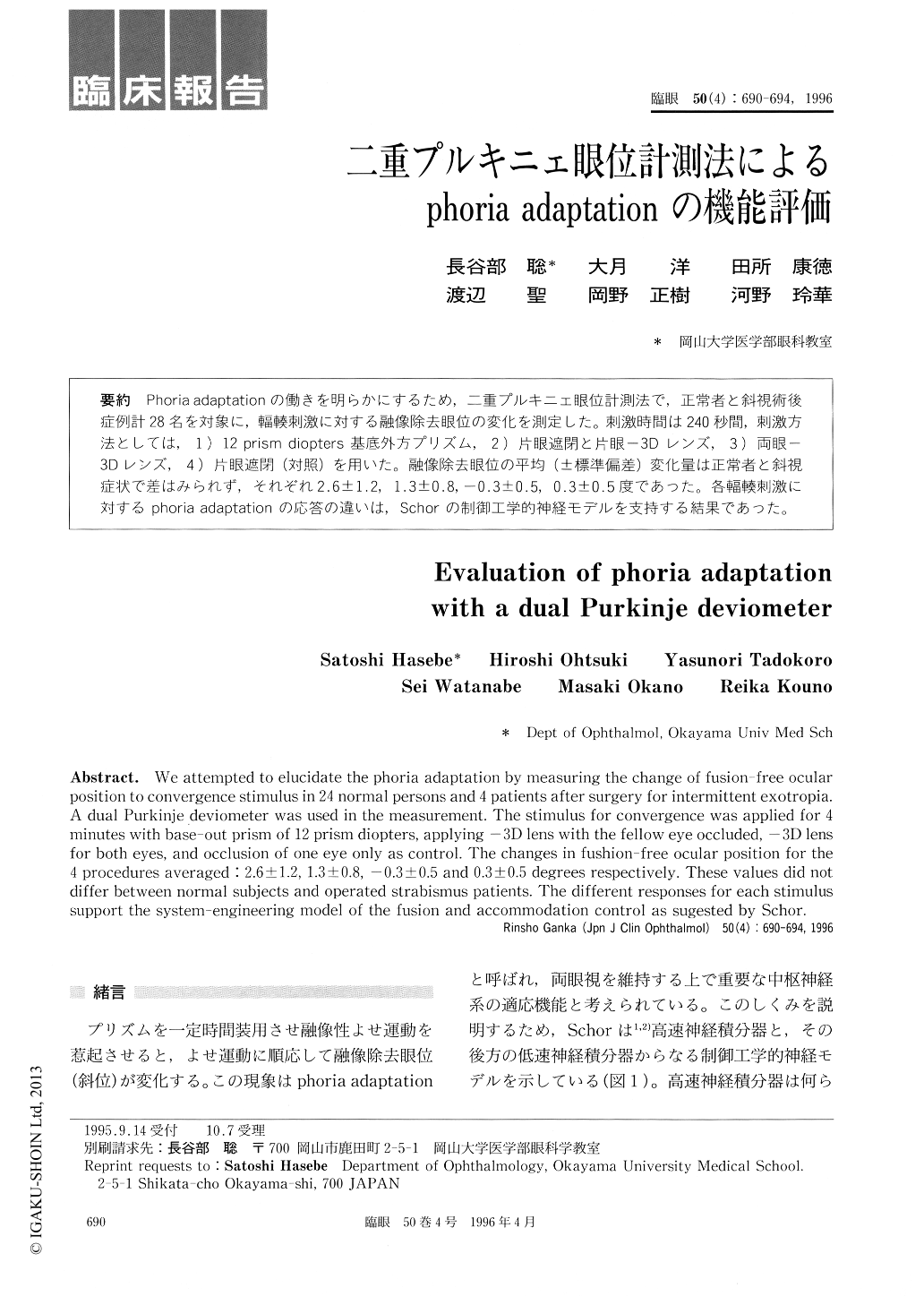Japanese
English
- 有料閲覧
- Abstract 文献概要
- 1ページ目 Look Inside
Phoria adaptationの働きを明らかにするため,二重プルキニェ眼位計測法で,正常者と斜視術後症例計28名を対象に,輻輳刺激に対する融像除去眼位の変化を測定した。刺激時間は240秒間,刺激方法としては,1)12prism diopters基底外方プリズム,2)片眼遮閉と片眼−3Dレンズ,3)両眼−3Dレンズ,4)片眼遮閉(対照)を用いた。融像除去眼位の平均(±標準偏差)変化量は正常者と斜視症状で差はみられず,それぞれ2.6±1.2,1.3±0.8,−0.3±0.5,0.3±0.5度であった。各輻輳刺激に対するphoria adaptationの応答の違いは,Schorの制御工学的神経モデルを支持する結果であった。
We attempted to elucidate the phoria adaptation by measuring the change of fusion-free ocular position to convergence stimulus in 24 normal persons and 4 patients after surgery for intermittent exotropia. A dual Purkinje deviometer was used in the measurement. The stimulus for convergence was applied for 4 minutes with base-out prism of 12 prism diopters, applying-3D lens with the fellow eye occluded, -3D lens for both eyes, and occlusion of one eye only as control. The changes in fushion-free ocular position for the 4 procedures averaged: 2.6±1.2, 1.3±0.8, -0.3±0.5 and 0.3±0.5 degrees respectively. These values did not differ between normal subjects and operated strabismus patients. The different responses for each stimulus support the system-engineering model of the fusion and accommodation control as sugested by Schor.

Copyright © 1996, Igaku-Shoin Ltd. All rights reserved.


